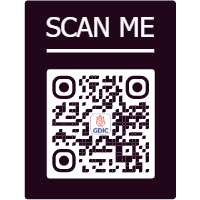
Angiography is a technique used to examine blood vessels and organs particularly hearts, veins and arteries. To capture detailed info, a Dye(Contrast-Agent) needs to be injected into your blood first.
Angiography is a technique used to examine blood vessels and organs particularly hearts, veins and arteries. To capture detailed info, a Dye(Contrast-Agent) needs to be injected into your blood first.
Contrast Agents: A substance used to enhance the radiodensity or contrast of fluids within the body in medical imaging.
Why to Use Angiography:
To examine the health of your blood flow, blood vessels, and blockages. Here are some more info about why to use Angiography?-
- Severity of blockages: To determine the best course of treatment, doctors used Angiography to examine the extent of blockages in blood vessels.
- Judging treatment effectiveness: After treatment, Angiography can be used to determine if the treatment has successfully improved blood flow.
- Blood Supply: To understand the blockages in blood supply to your kidney.
- Angina: A serious issue of chest pain which can cause heart stroke or heart attack, it is caused by reduced blood flow to the heart muscles.
- Examine blood clots: To examine the blockages in the supply of arteries to your lungs.
What Happens During Angiography:
As Blood vessels do not show clearly on normal X-Ray, There are some steps of Angiography-
- A medicine called sedative used to relax you.
- Near your wrist area, one of your artery small cuts (incisions) is made.
- A thin tube will be inserted into the artery.
- A catheter (flexible tube) inserted into the area that’s being examined.
- A dye (Contrast Agent) will be injected to the catheter.
- As contrast Agent dye will flow into your blood vessels, numbers of X-Rays will be taken.
- And here, the doctor will monitor the where and how well blood is flowing into your blood vessels.
Is Angiogram Time Taking?
Angiography often takes 15 to 20 minutes, some might take a few hours to be done as it depends on your procedures and what your providers suggested you to treat after they find the issue. In your nearby Ganesh Diagnostic & Imaging Centre, you can check and understand the overall procedure in a better way.
Angioplasty would be done if your doctor finds any blockages near your heart by which the flow of your blood is reduced. Angioplasty is an invasive process that opens the blood arteries and restores blood flow.
In this process, to improve the blood flow a tiny balloon inflated into the arteries to widen it and improve the blood flow and later the balloon deflated and removed.
After This Surgery?
- Avoid heavy lifting and driving for some period of time.
- For a quick recovery, having rest is a better option, it gradually increases your activity level.
- Keep the area safe and clean where the catheter is inserted.
- Take all prescribed medicines and avoid other medication which is not recommended by doctors.
- Follow a heart-healthy diet.
When to Contact Your Doctor?
- If you feel chest pain, severe bleeding from the area where the catheter is inserted.
- If you have any doubt regarding side effects or unsuitable medicines.
When Should I Concern With My Health Provider:
The Angiography is a safe procedure but there are some complications in this process you should know-
- Stroke: A medical condition, when the blood supply to the brain is interrupted.
- Kidney Damage: A temporary damage caused by the contrast agent.
- Allergy or reactions: Dizziness, breathing difficulties, consciousness are uncommon but serious issues can occur.
- Vessel Damage: Can cause Internal bleeding which may require a quick surgery.
Other Risks:-
- Bruises(Blood vessel break)
- Bleeding
- Infection
- Tissues damaged by X-Ray Radiation.
- Pain in catheter area.
- Blood Leak (rarely)
As informed, there are all these risks, so for that you can confirm in our Ganesh Diagnostic & Imaging Centre for better treatment and results, and as shared after angioplasty avoid heavy lifting, driving, extreme exercises, outer medicines without concern.
Conclusion
Angiography is a tool to detect and treat cardiovascular and vascular conditions. Which often takes 15 to 20 minutes to examine the blockages and leakage in your blood vessels or arteries. If you feel chest pain, bleeding, swelling, shortness of breath etc you should visit your nearby radiologist, vascular surgeon and cardiologist.
FAQS-
Is Angiography a major surgery?
No, Angiography is a minimal invasive procedure used to examine the blood vessels and flow of the blood in your body organs such as - Heart, arteries, and veins.
Is Angiography risky?
No, it's not even painful or risky, but there are some things you should avoid after the surgery like- driving, lifting etc. For more you can visit your nearby Ganesh Diagnostic & Imaging Centre.
Are Angiogram and Angioplasty same?
No, Angiogram let’s your doctor examine the blockage in your artery whereas in Angioplasty it is a process to treat the blockage.
Who performs this test?
If you’re having symptoms like chest pain, swelling, breathing shortness, visit radiologists, cardiologist or vascular surgeon.









